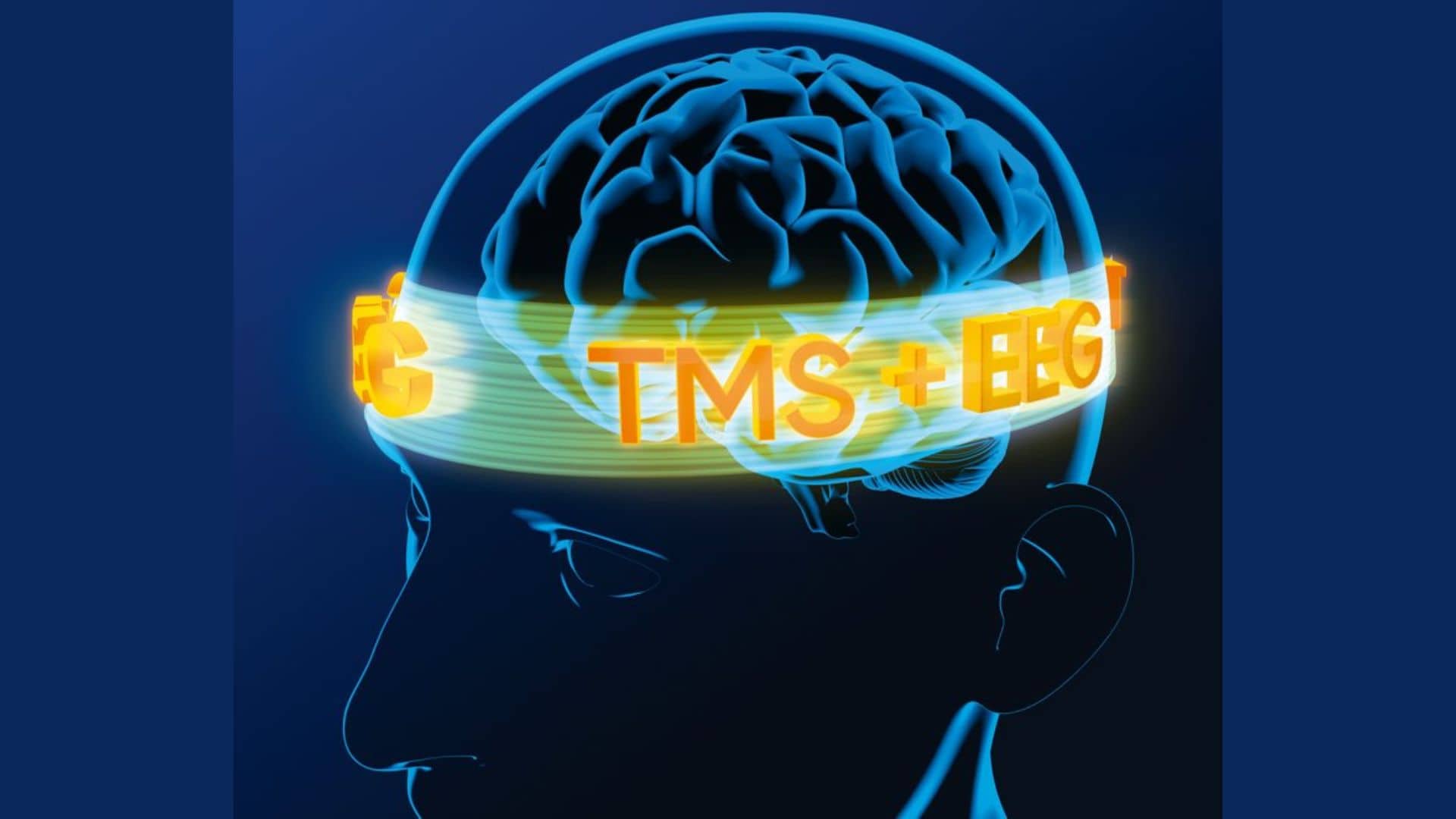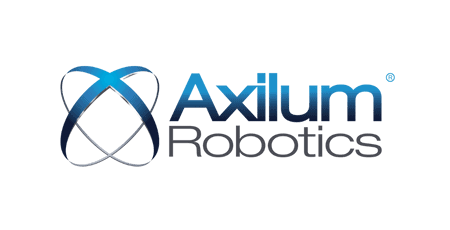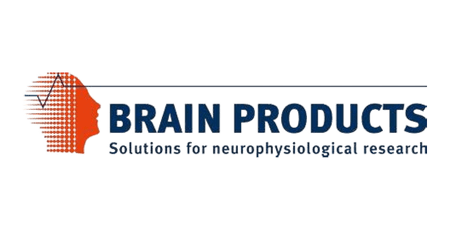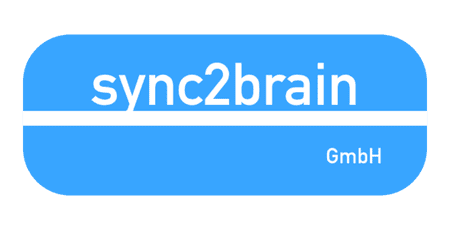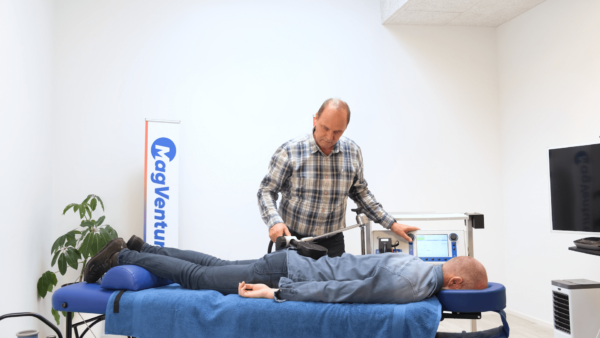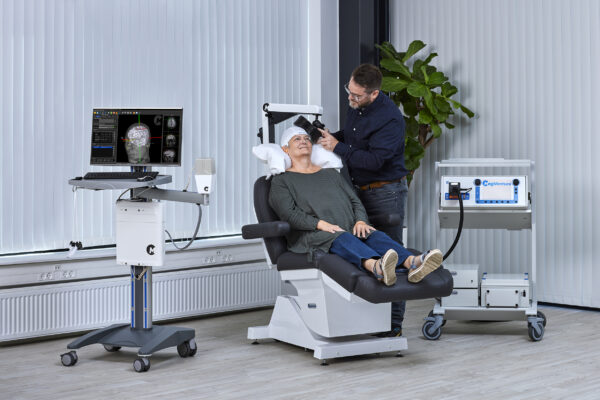
Versatile TMS possibilities
Enabling TMS research studies for 30 years for a wide range of applications

Unique solutions
Double-blind, TMS/fMRI, translational research and multi-site stimulation

Powerful partnerships
Taking TMS to the next level with strategic partners enable neuronavigated, robotic and brain state dependent TMS
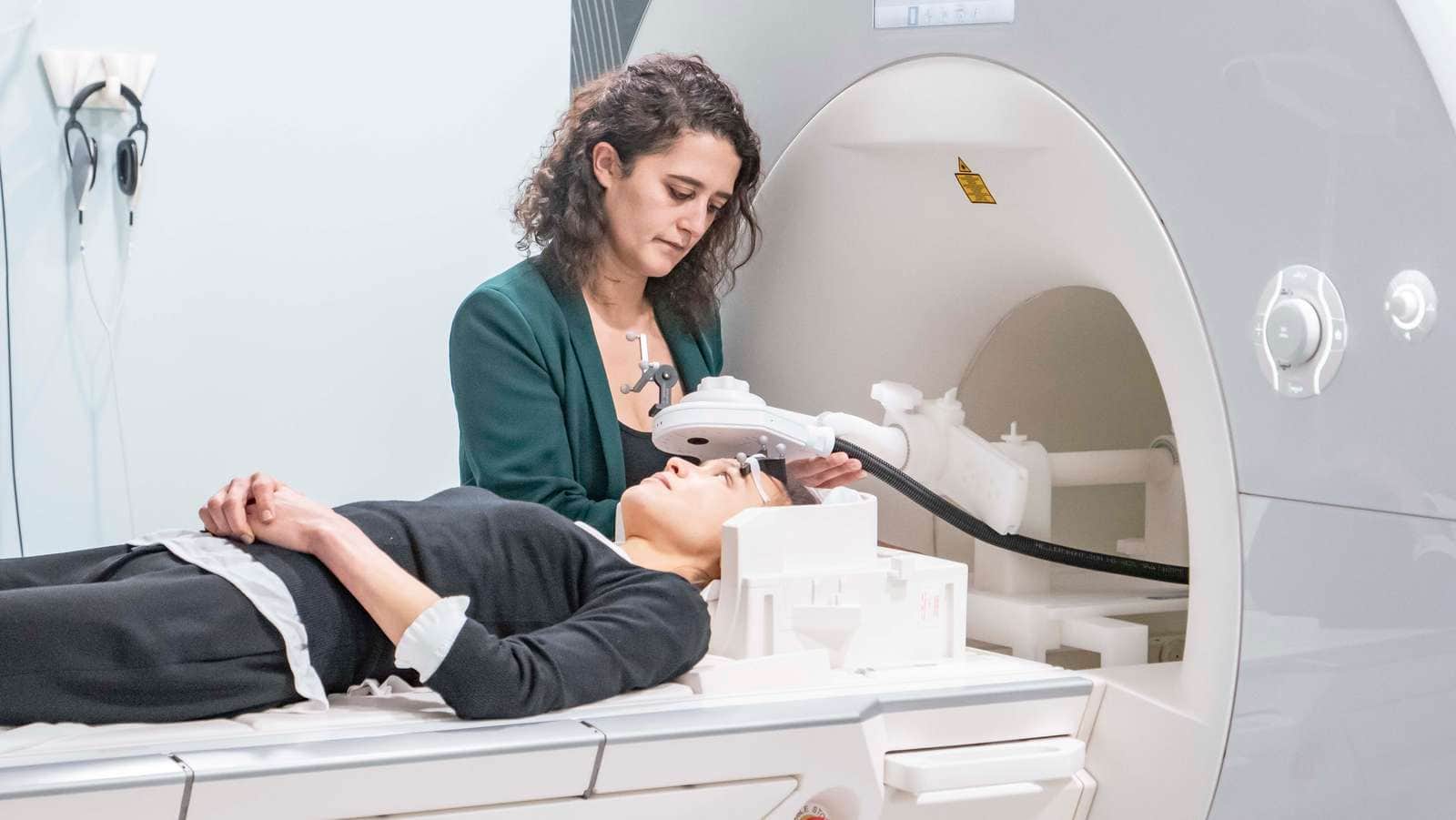
If you need to Study human brain functionality in real-time
Interleaved TMS/fMRI
With this complete turnkey TMS/fMRI research solution, it is possible to induce neural activity safely into targeted cortical regions, directly in the MRI scanner. Features of the MagVenture TMS/fMRI solution further include:
- Special TMS coils for use inside the MRI scanner
- Reduced RF noise filters and controllers
- Stimulator-controlled recharge delay and parameters
- High quality imaging
- Ability to add inside/inbore neuronavigation
A dedicated 7-channel coil array TMS/fMRI, particularly at the stimulation site, a dedicated 7-channel, ultra-slim RF coil array may be used with both of MagVenture’s MRI coils, further adding:
- Improved signal-to-noise ratio over a traditional birdcage MRI head coil
- Enhanced coil position flexibility
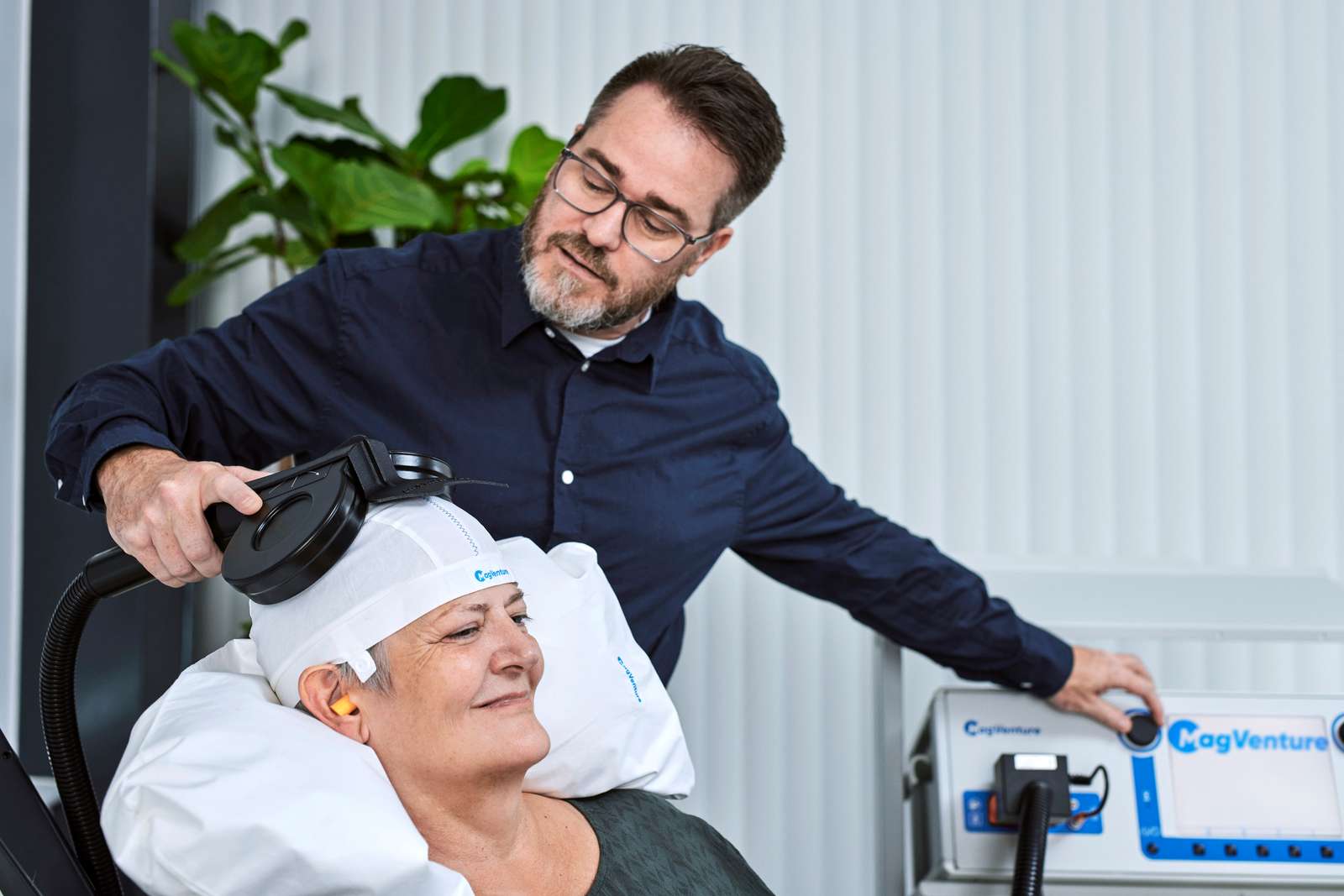
If you need a solution for double-blinded TMS studies
Clinical TMS research studies
MagVenture offers a highly flexible solution to address all your requirements for accuracy, reliability, and consistency in clinical research, including also the ability to perform true randomized, double-blinded, multi-center studies. A robotic solution and/or neuronavigation option is available to further enhance the reproducibility of your research.
- Coils with both active and sham sides (or with only a placebo side)
- Software for complete study control by study master or principal investigator
- Patient and operator codes to ensure true double-blinding
- Sham noise generation
- Electric masking
Combined with advanced software, neither the operator nor the patient knows who receives real TMS treatment and who receives sham treatment.
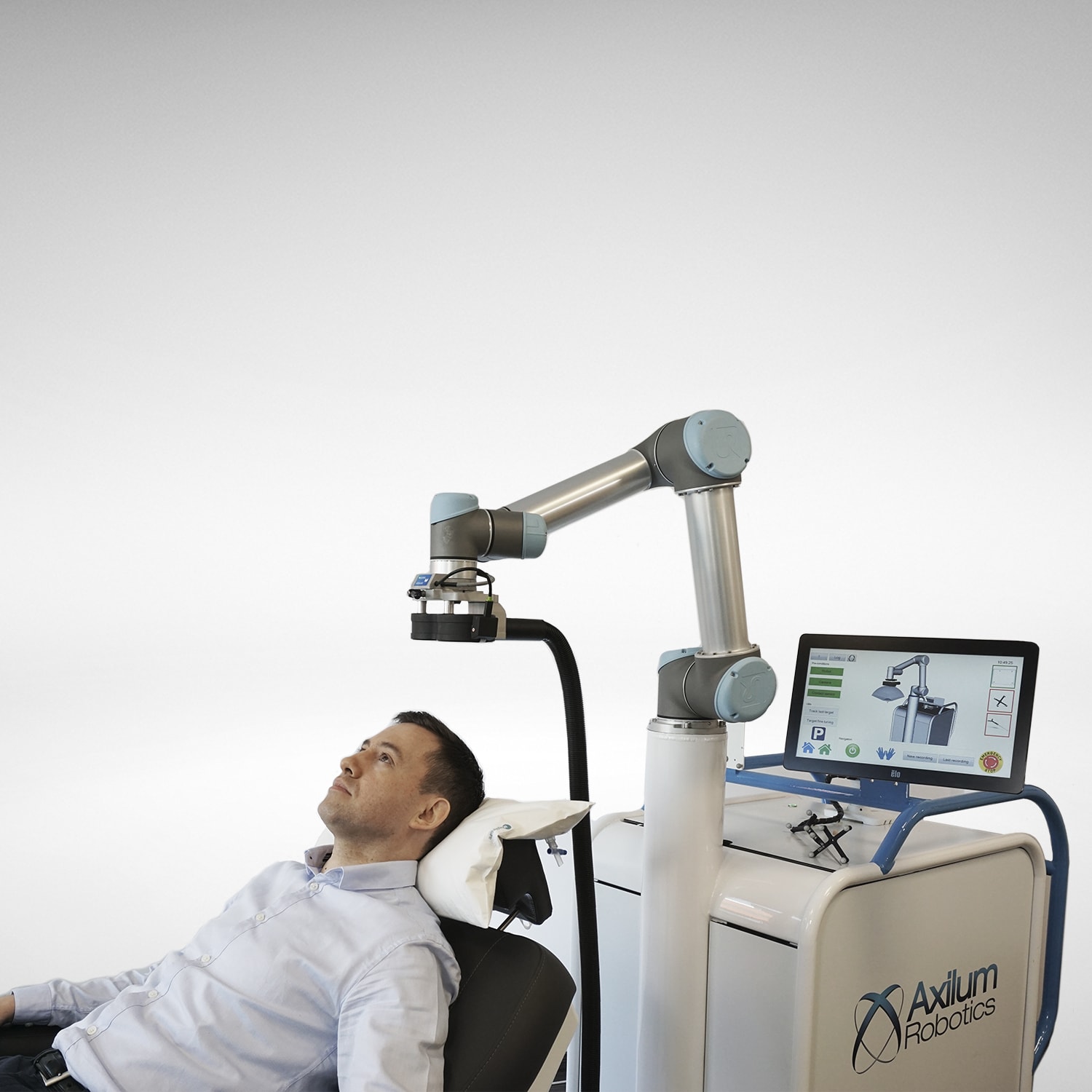
If you need Accurate TMS with motion control and comfort
Robotic TMS solutions with Axilum Robotics
Head motion compensation monitors the coil’s position, orientation, and contact to the head at all times and actively follows any possible head movement during TMS. It ensures a high level of repeatability between TMS sessions, is integrable with MagVenture stimulators and coils, and may be piloted by a neuronavigation system from Localite.
- Maintains position, orientation, and tilt of TMS coil during session
- Compensates for potential head motion
- Integrated contact sensor maintains coil-head contact
- Enables fully-automated image-guided and predefined stimulation paths when piloted by compatible neuronavigation system
- Reduces inter-operator variability and eliminates need for coil adjustment during session.
Choose your Axilum system:
- TMS-Cobot: Smaller system optimized for clinical use.
- TMS-Robot: High-end robot system for advanced brain research.
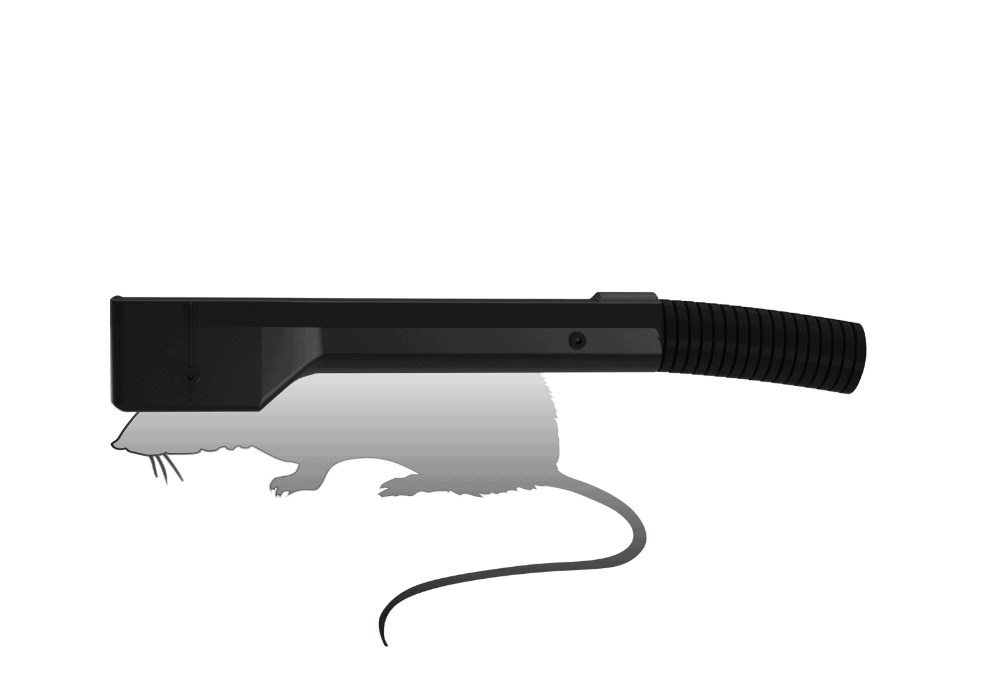
If you need a TMS solution for animal model research
Translational research
MagVenture offers a specifically dedicated coil for animal model research. It provides a unique opportunity to study the effects of TMS within a wide range of fields including behavioral, metabolic, (epi) genetics, molecular, and biochemical pathways. This research solution overcomes previously known challenges pertaining to focality, overheating, shape, and size. It provides complete replicability and reliability and, due to the small coil size, it will even fit inside a PET or SPECT imaging scanner.
Want to do research on larger animals?
- MagVenture offers a range of slightly larger coils which are also suitable for translational research – for example the B35 or MCF-75.
- The Cool-40 Rat Coil was originally developed with researchers at Antwerp University who were seeking to unravel the mechanism of action for TMS as well as test new paradigms.
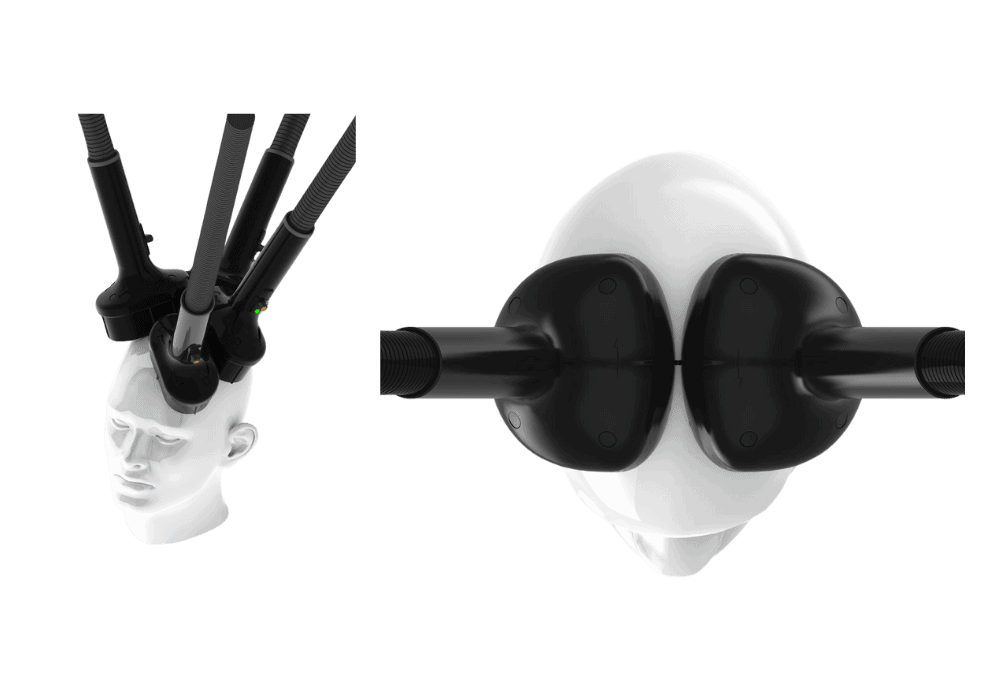
If you need to use multiple coils
Multi-site stimulation
The small geometry of the B35 coil enables you to place multiple coils simultaneously on the head providing a focal, yet powerful stimulation. The B35 coil comes in different versions to suit your specific needs.
- MC-B35
- Cool-B35
- Cool B35-HO (with handle turning upwards for easy coil placement)
- Cool-B35 RO (Robotic edition to be used with the Axilum robot)
Another option is the D-shaped Cool-D50 coil with the stimulation center being placed at the edge of the coil. This allows for alternating stimulation of two centers in the brain only 2-3 cm apart. Smaller circular coils like the MMC-90 coil or MCF-75 coil are also available for less selective stimulation, but still allow for multiple coils to be placed close to one another.
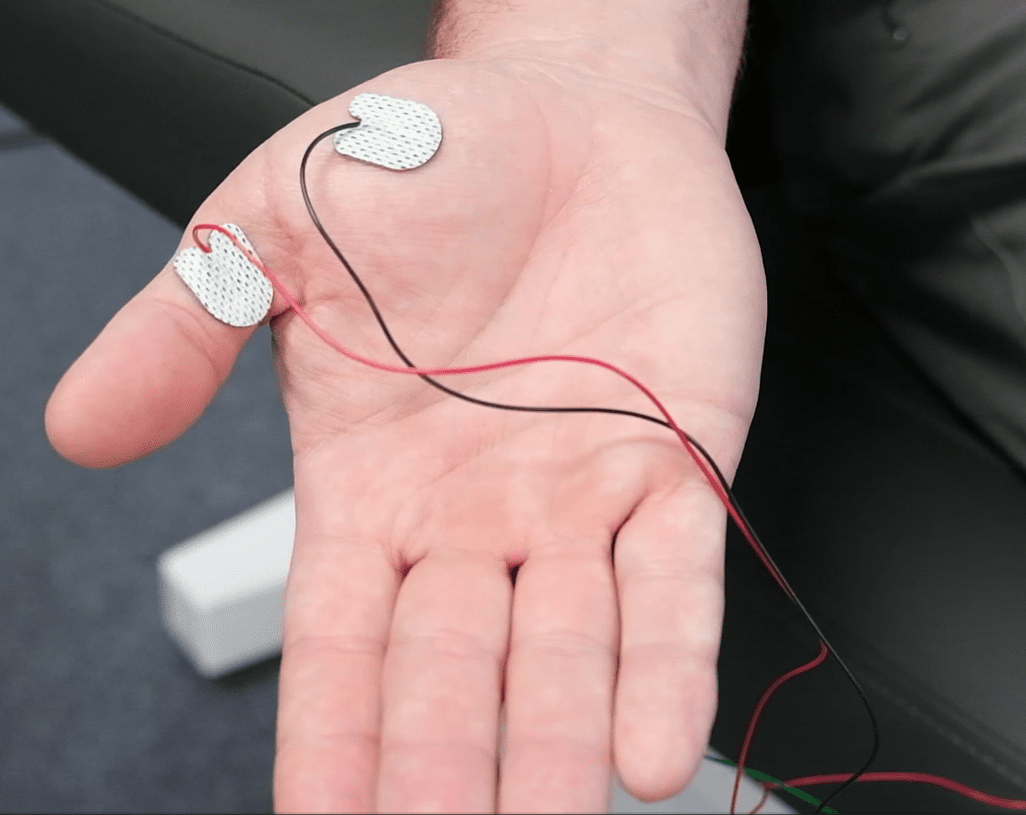
If you need a Classic combination between TMS and EMG
MEP – Motor evoked potentials
TMS is commonly used to measure Motor Evoked Potentials (MEPs), which are electrical signals generated by the muscles in response to a TMS pulse.
Some of the main uses of TMS for MEPs include:
- Assessing the integrity of the corticospinal tract, which is the pathway that connects the brain to the spinal cord and controls voluntary movement
- Evaluating the function of specific brain regions involved in motor control and coordination
- Studying the effects of various drugs and therapies on motor function
- Diagnosing and monitoring neurological disorders, such as stroke, multiple sclerosis, and amyotrophic lateral sclerosis (ALS)
- Planning and monitoring rehabilitation programs for individuals with motor impairments
TMS for MEPs is a valuable tool for both research and clinical applications, allowing for non-invasive assessment of motor function and identification of underlying neurological issues.

If you need more pps and less roll off
Meet MagPro XP
MagVenture’s XP Orange Edition delivers 250 pps, over twice the power of a standard stimulator, exceeding any other available.
It’s the first TMS device bridging the gap between electrophysiological memory models and TMS, using the same brain frequency. The integrated coil cooling system allows for ultra-focal stimulation without coil overheating.
The XP Orange Edition is a fully encased system with a practical console design, making transportation between labs easy.
- Larger frequency range than standard stimulator
- Optimized for interleaved TMS/fMRI
- Flexible operation with movable screen
- Improved durability
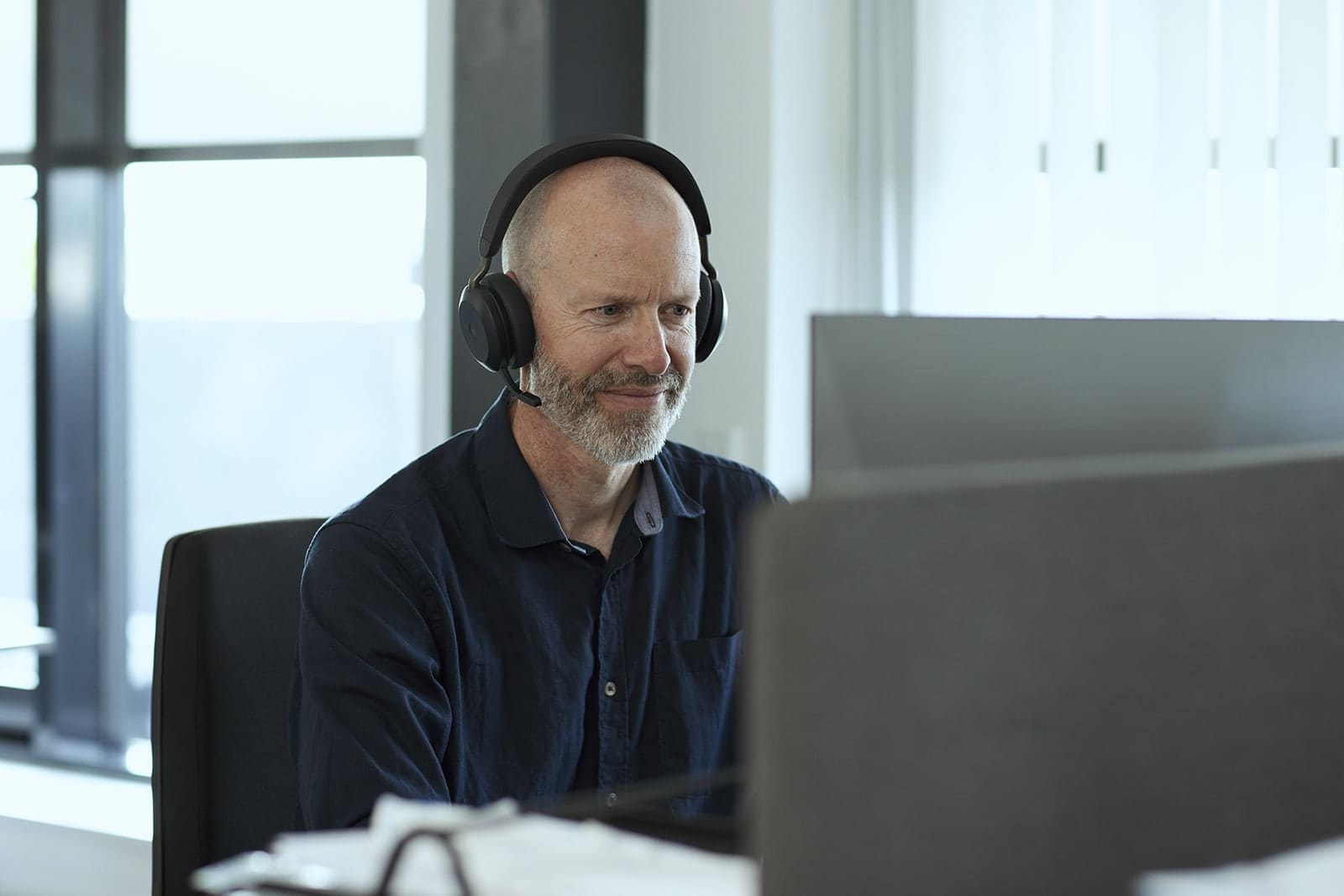
Get in contact

